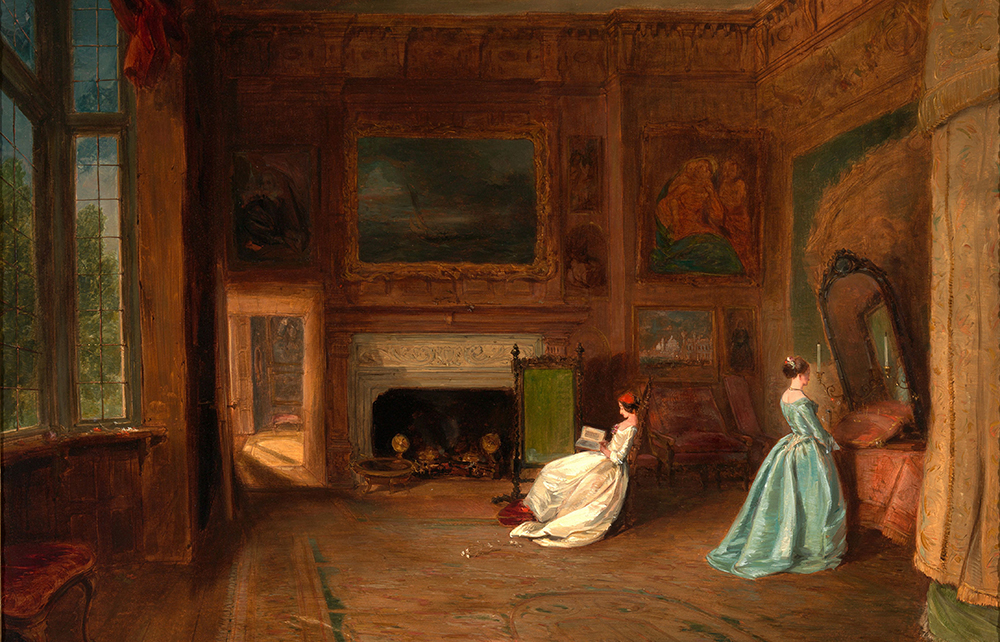The Historic Houses Association can congratulate itself. This pressure group for country houses, founded in 1973, has proved to be one of the most effective lobbying organisations of our time. When it came into being, the future, according to the architectural historian John Cornforth, was ‘full of gloom’ for the country house.
The Destruction of the Country House exhibition of 1974 revealed the extent of the crisis, which had set in a century earlier with the agricultural depression of the 1870s. That was when aristocrats who had previously relied on the income from their estates built their hopes on landing a transatlantic beauty with ‘plenty of tin’. The supply of heiresses dried up in about 1912, just before the first world war. Taxation later followed, and it was Götterdämmerung for a thousand habitations of the gods.
Dickens had already foreseen the social change in Bleak House, where Sir Leicester Dedlock is eclipsed by the son of his housekeeper, a thrusting ironmaster. A rout of Dedlocks might have followed in the 20th century. It was the HHA which rallied the troops and led the counter charge against Denis Healey’s wealth tax. Not only was the country house saved, but it underwent the astonishing revival that is the subject of this book. As director general of the HHA, Ben Cowell is ideally placed to tell the story.
He does so with aplomb. Triumphalism would be distasteful at a time of social division. We have now returned to the Edwardian age when it comes to disparity of incomes – which is one reason, indeed, that the country house is on a roll. Billionaires are building and restoring, and no doubt their lifestyles will be studied by future historians. But for all their expertise in digital technology and hedge funds, these plutocrats don’t create equivalents of the stately home.
The importance of the country house, in heritage terms, lies in its being the product of many generations. Centuries of ownership by the same family don’t merely give historical depth; they have in many cases brought astonishing collections – of pictures, silver, books, porcelain, glass and natural history specimens – which are displayed in the context they were meant for. Nobody could assemble these treasures today because they are no longer on the market.
And it isn’t only the stars of the show that are important. In some ways, lesser pieces have greater historical worth because they are even rarer. A mid-18th-century bedroom hung with beautiful but second-rate tapestries, used virtually as wallpaper, tells a story that will not be found elsewhere. Why did the owner create such a bedroom, given that the fashion for using tapestry in this way had long passed? Go to Doddington Hall in Lincolnshire, where the room exists, to find out. Tapestry is fragile, and while top-flight examples were cherished, the second rank was allowed to fade until it was moth-eaten and fell apart. Another reason that the Doddington room is special.
This was in fact recognised by the post-war Labour government, after it commissioned a report from Sir Ernest Gowers. Seeing ‘the English country house, in all its aspects, as second only to our literature as a contribution to the arts of mankind’, Gowers concluded, to everyone’s astonishment, that country houses could best be preserved by keeping them in private ownership. This had nothing to do with sympathy for the Dedlocks of this world. The government simply could not afford to take more than a token number into public ownership.
Subsequent Labour governments followed this lead, shielding the country house from redistributive fiscal measures by, in 1976, allowing owners to create maintenance funds. By contrast, Margaret Thatcher was more of the ironmaster persuasion, but that hardly mattered, given the rejuvenating effect of low taxes. The loadsamoney generation loved country houses. And the soaring value of works of art meant that the sale of a painting or drawing, particularly if the Getty were interested, could pay for a new roof.
Crippling death duties could be offset by offering heirlooms to the nation in lieu of tax – the objects might then stay in the house, although the owner had no rights to them. A big house could be placed in a charitable trust, if the public had access – leaving many owners more as representatives of a shared family interest than lords of all they surveyed. Weddings came to the rescue of many properties, a double-edged sword when, to make room for them, the family had to move out – thereby defeating the object. Cottages once occupied by retainers were let to weekenders at high rents. But in the 1970s, the rent acts meant that land agents advised demolition, to avoid the costs of upkeep. Big mistake.
Altogether, Cowell tells a roller-coaster of a story. I was pleased to discover that the American actor George Raft, who plays Spats Colombo (the nemesis of Toothpick Charlie) in Some Like It Hot, really was a gangster, implicated in the burning down of Shortgrove Hall, Essex, for the insurance. Strangely, though, the author shortchanges the man who might have been the hero of the piece, Roger Tempest. He not only reimagined the dilapidated family home of Broughton Hall in Yorkshire (the inspiration of his sister Annie Tempest’s Tottering-by-Gently column in Country Life) as a thriving hub of rural employment, but helped more than 300 other estates maximise their assets. Redundant farmyards became business parks.
Of course, Cowell cannot put too rosy a gloss on the country house. There are huge backlogs of repairs and the Labour wealth tax hovers in the air like the smell of cabbage in the corridors below stairs. But it has been having a good run – a source of endless fascination for those of us who mostly stop at the lodge gates.







Comments